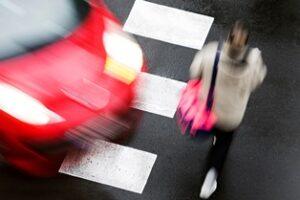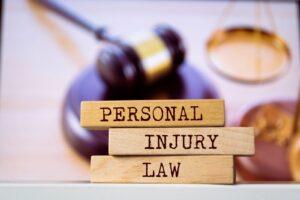
One minute you were walking on a Kansas City street. The next, you were hit by a car. You were the one who was left seriously hurt in the accident, but your legal recovery won’t be automatic just because you suffered severe injuries. Instead, you need to prove who was at fault for the crash and, therefore, who should pay your damages. Our experienced Kansas City pedestrian accident lawyers are here to guide you through the process so that you can make the fair recovery you deserve.
Who Had the Right of Way?
When considering who was at fault for the pedestrian accident, it’s essential to understand Missouri pedestrian laws.
Intersections and Crosswalks
According to Missouri law, pedestrians generally have the right-of-way at intersections and crosswalks. Drivers must yield to pedestrians in these areas, allowing them to cross the road safely. However, pedestrians must exercise caution and:
- Use designated crosswalks whenever possible
- Yield to oncoming traffic that poses an immediate hazard at unmarked crosswalks
- Obey traffic signals and crosswalk signals
- Yield to emergency vehicles that have their lights and sirens on
Sidewalks
Pedestrians should use sidewalks whenever they are available. If there is no sidewalk, pedestrians should walk facing oncoming traffic as far to the left side of the roadway as possible, ensuring their safety and visibility.

Common Types of Kansas City Pedestrian Accidents
Kansas City pedestrian accidents can happen anywhere. Often, they occur on busy downtown streets, school zones, and residential areas where there are more people on the street. In these areas, pedestrians are often hurt in:
- Intersection collisions. Drivers who fail to yield the right-of-way to pedestrians, run red lights or stop signs, or make improper turns may cause pedestrian accidents at intersections.
- Crosswalk accidents. Drivers who are distracted or otherwise negligent may fail to see a pedestrian in the crosswalk and cause a dangerous crash.
- Right turn crashes. Drivers may not notice pedestrians in their blind spots, or they may neglect to yield the right of way to pedestrians when making right turns at intersections or driveways.
- Backing up accidents. Drivers may not see pedestrians behind them when they are moving in reverse. These types of pedestrian accidents often occur in parking lots and driveways.
- Sidewalk collisions. Motorists should not be on sidewalks, but sidewalk collisions can happen. Often, these crashes occur when a driver is impaired, distracted, or loses control of their vehicle. Sidewalk accidents can also happen when vehicles collide on the road and are pushed onto the sidewalk, where they strike pedestrians.
These pedestrian accidents can happen any time a driver is negligent. Some common forms of driver negligence that result in severe pedestrian accident injuries include:
- Distracted driving crashes. A driver’s inattention reduces their ability to observe and avoid pedestrians. Common driver distractions include texting, talking, and using in-car entertainment systems. However, driver distraction occurs whenever a driver’s hands come off the steering wheel, eyes come off the road, or attention comes away from driving safely.
- Drunk driving accidents. Drivers who are under the influence of alcohol or drugs have slower reaction times and impaired judgment, which can lead to pedestrian collisions.
- Speeding accidents. High speeds reduce driver reaction time and increase the severity of pedestrian injuries.
If you’ve been hurt in a Kansas City pedestrian crash, it’s essential to understand how to prove fault to the insurance company or in court so that you can get the fair recovery you deserve.
Contact our Kansas city personal injury lawyers now.

What Fault Means and How to Prove It
Negligence, or fault, is a legal concept, and you, together with your Kansas City pedestrian accident lawyer, must prove that someone else was at fault for your pedestrian crash injuries before you can recover damages.
Elements of Negligence
The following elements must be proven to establish negligence:
- Duty of care. The defendant (the driver) owed a duty of care to the plaintiff (the pedestrian) to act reasonably and avoid causing harm.
- Breach of duty. The defendant breached that duty by failing to exercise reasonable care.
- Causation. The defendant’s breach of duty was the direct cause of the pedestrian’s injuries or damages. In other words, your injuries would not have occurred but for the driver’s negligence.
- Damages. The defendant suffered actual harm, such as physical injuries, medical expenses, pain and suffering, or lost wages because of the accident.
How to Prove Your Case
You will need evidence to prove each element of negligence described above. Some examples of relevant evidence include:
- Police reports. The police officer who came to the accident scene will file an accident report that includes details of the accident, statements from involved parties, and any citations issued.
- Eyewitness testimony. Other people may have seen the crash occur. Their testimonies can provide essential insights into the events leading up to the accident and help establish fault.
- Surveillance footage. If available, review footage from nearby surveillance cameras, traffic cameras, or businesses in the vicinity. Video evidence can provide a clear picture of how the accident occurred.
- Photos and videos. Take photographs and videos of the accident scene, including vehicle damage, skid marks, road conditions, traffic signs, and any visible injuries. Visual evidence can be persuasive in demonstrating negligence.
- Accident reconstruction. In complex cases, an accident reconstruction expert can analyze the evidence, including vehicle positions, speeds, and other factors, to determine how the accident occurred and who was at fault.
- Cellphone records. If distracted driving is suspected, obtaining cellphone records of the involved driver may help establish negligence. These records can reveal if the driver was using their phone during the accident.
- Medical records. Gather medical records documenting your injuries and the treatment you received. These records provide evidence of the harm suffered and the impact on the pedestrian’s health and well-being.
- Any other relevant documentation. This may include repair estimates, receipts for medical expenses, wage loss statements, or any other documents that help establish the damages incurred due to the accident.

Pedestrian Accident Compensation
Once you know who caused the accident, you can seek a fair recovery from that person or that person’s insurance company. Your potential compensation may include:
Medical Expenses
- Hospital bills
- Ambulance fees
- Surgical costs
- Medications and medical equipment
- Rehabilitation and physical therapy expenses
- Future medical expenses related to the accident
Lost Income
- Compensation for wages, benefits, and income from self-employment missed from work due to the accident and recovery
- Diminished earning capacity if the accident resulted in long-term or permanent disability
- Loss of future earning potential
Pain and Suffering
- Physical pain and discomfort caused by injuries
- Emotional distress, including anxiety, depression, and post-traumatic stress disorder (PTSD)
- Loss of enjoyment of life due to the accident’s impact on daily activities and hobbies
Disfigurement and Disability
- Compensation for any permanent scars, disfigurement, or visible injuries resulting from the accident
- Damages for long-term or permanent disabilities that affect mobility, cognitive function, or overall quality of life
In cases involving extreme negligence or intentional misconduct, punitive damages may be awarded to the injured pedestrian or surviving family members. Punitive damages are meant to punish the at-fault party and deter similar behavior in the future.
What Happens If the Pedestrian Was Partly at Fault for the Accident?
Sometimes, both the driver and pedestrian may be partially responsible for the accident. In these cases, Missouri follows the doctrine of comparative fault, which means that the pedestrian’s negligence, if any, will be considered when determining compensation. The court will assign a percentage of fault to each party involved based on their contributions to the accident. The pedestrian can still recover damages as long as they are found to be less than 51% at fault for the crash. The amount of damages will be reduced by the percentage of fault attributed to the pedestrian.
Your specific amount of compensation will depend on various factors, including the severity of injuries, the impact on your life, and the level of negligence demonstrated by the at-fault party. Our experienced Kansas City pedestrian accident lawyers will help determine the appropriate types and amounts of compensation to seek in your specific case and fight hard to get you the full and fair recovery you deserve so you can move on with your life after a pedestrian accident.




